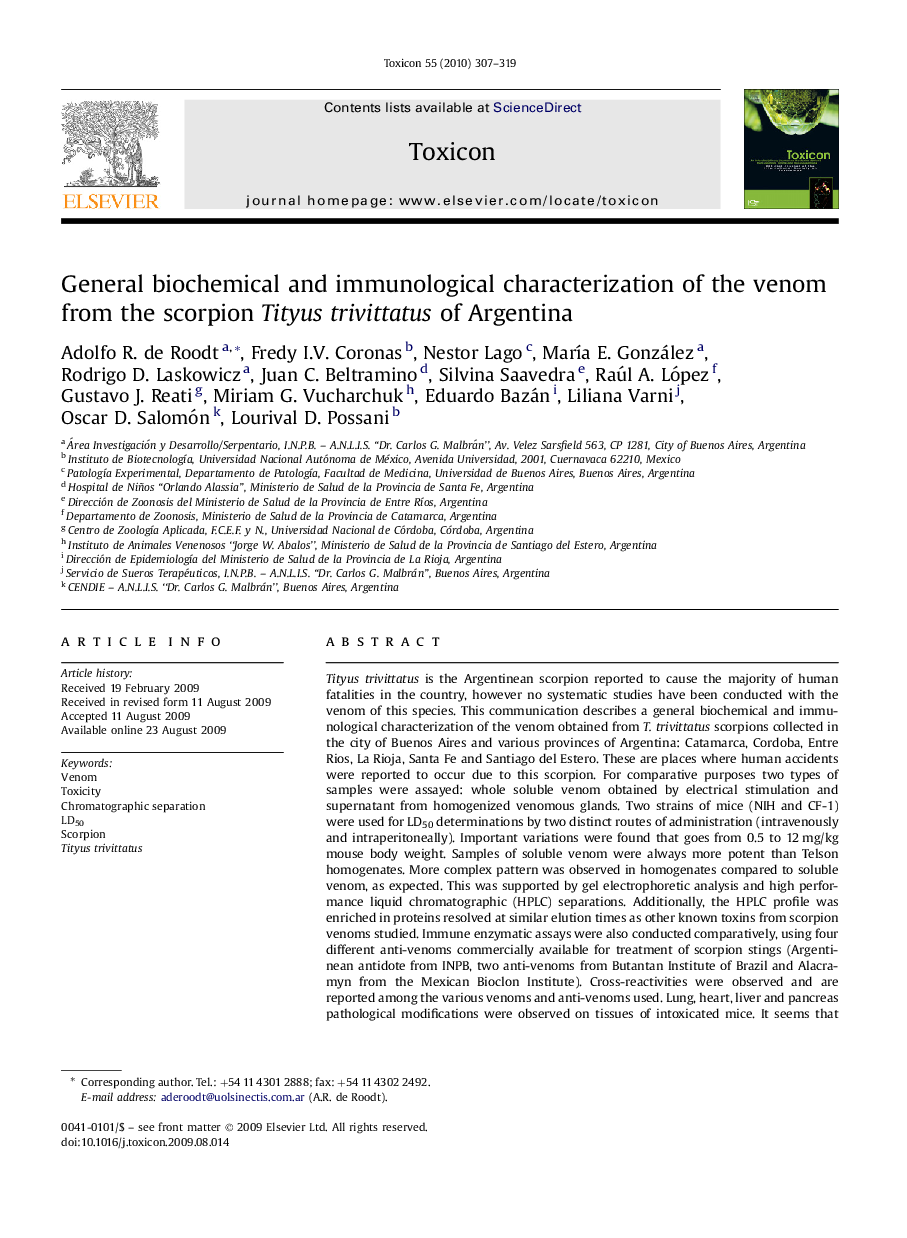| Article ID | Journal | Published Year | Pages | File Type |
|---|---|---|---|---|
| 2065325 | Toxicon | 2010 | 13 Pages |
Tityus trivittatus is the Argentinean scorpion reported to cause the majority of human fatalities in the country, however no systematic studies have been conducted with the venom of this species. This communication describes a general biochemical and immunological characterization of the venom obtained from T. trivittatus scorpions collected in the city of Buenos Aires and various provinces of Argentina: Catamarca, Cordoba, Entre Rios, La Rioja, Santa Fe and Santiago del Estero. These are places where human accidents were reported to occur due to this scorpion. For comparative purposes two types of samples were assayed: whole soluble venom obtained by electrical stimulation and supernatant from homogenized venomous glands. Two strains of mice (NIH and CF-1) were used for LD50 determinations by two distinct routes of administration (intravenously and intraperitoneally). Important variations were found that goes from 0.5 to 12 mg/kg mouse body weight. Samples of soluble venom were always more potent than Telson homogenates. More complex pattern was observed in homogenates compared to soluble venom, as expected. This was supported by gel electrophoretic analysis and high performance liquid chromatographic (HPLC) separations. Additionally, the HPLC profile was enriched in proteins resolved at similar elution times as other known toxins from scorpion venoms studied. Immune enzymatic assays were also conducted comparatively, using four different anti-venoms commercially available for treatment of scorpion stings (Argentinean antidote from INPB, two anti-venoms from Butantan Institute of Brazil and Alacramyn from the Mexican Bioclon Institute). Cross-reactivities were observed and are reported among the various venoms and anti-venoms used. Lung, heart, liver and pancreas pathological modifications were observed on tissues of intoxicated mice. It seems that there are important variations on the venom compositions of the various samples studied and reported here, depending on the geographical area where the scorpions were captured. The results reported here are important for the clinical outcome of human accidents.
